Necon 34 was this past weekend. Believe it or not, this was my 14th year attending. I started going in 2000, and only missed one year — 2009 — between then and now. Making this an extra special year was the fact that I was one of the Writer Guests of Honor, along with Amber Benson and Michael Koryta, with my dear friend Jack Haringa as Toastmaster. The Artist Guest of Honor was Erik Mohr, who does all the amazing covers for ChiZine Publications’ books, including my novella Chasing the Dragon. All three of them — Amber, Michael, and Erik — fit right in at Necon. They joked around with everyone and gave as good as they got (there’s a lot of sarcasm and snark at Necon, but it’s all done with love). The same can be said of special guest Kasey Lansdale, Joe R. Lansdale’s daughter and a talented entertainer in her own right. She gave a knockout concert Thursday night in the courtyard, and stuck around all weekend.
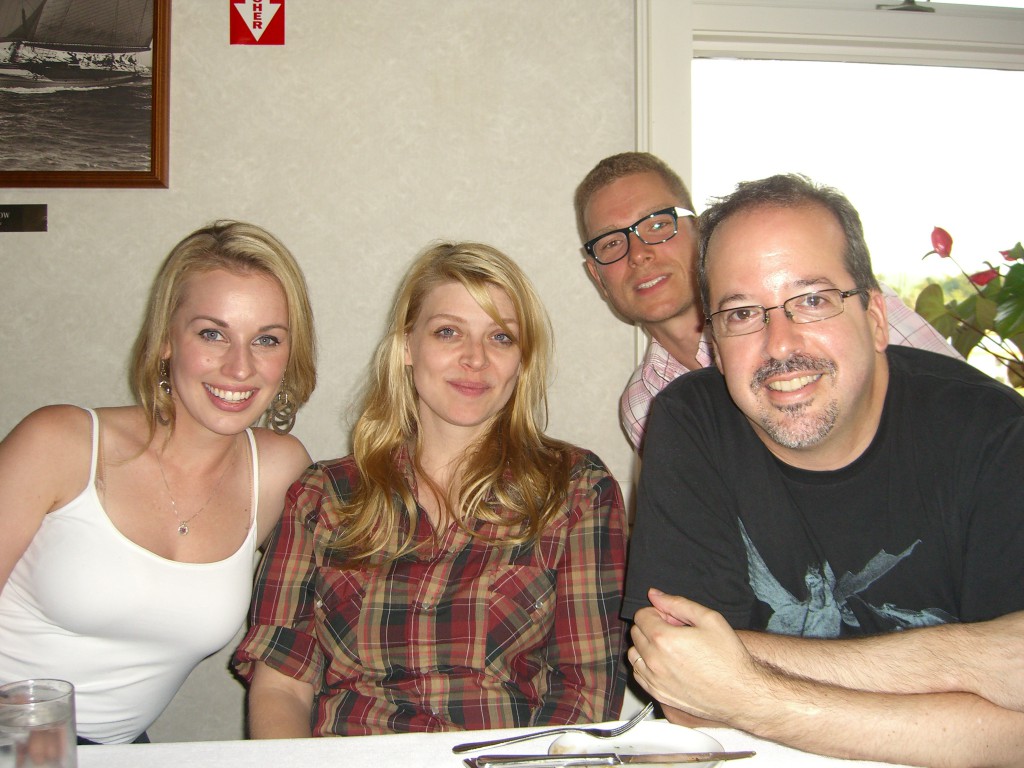
Thursday night dinner at the Lobster Pot with Kasey Lansdale, Amber Benson, Erik Mohr, and me.
For the first time in ages, the Necon goody bags were filled to the brim with books. Not just my own novel, Dying Is My Business, which St. Martin’s was kind enough to send, but there was a metric tonne of books donated by ChiZine Publications. I came home with something like eleven books, and that was after giving back the books I already owned!
The panels were their usual loosey-goosey shenanigans. Necon is very different from Readercon that way. But still, there were a lot of good topics being discussed and most of the time they were discussed seriously and knowledgeably. I very much enjoyed being on both the non-fiction panel and the erotic horror panel, even if the latter was at 9 AM on Sunday morning. But one of the highlights for me was definitely the Writer Guests of Honor interview led by Jack. It was scheduled for two hours instead of just one, and as moderator Jack made the time fly by with interesting and insightful questions. Plus, he only yelled at us a little.
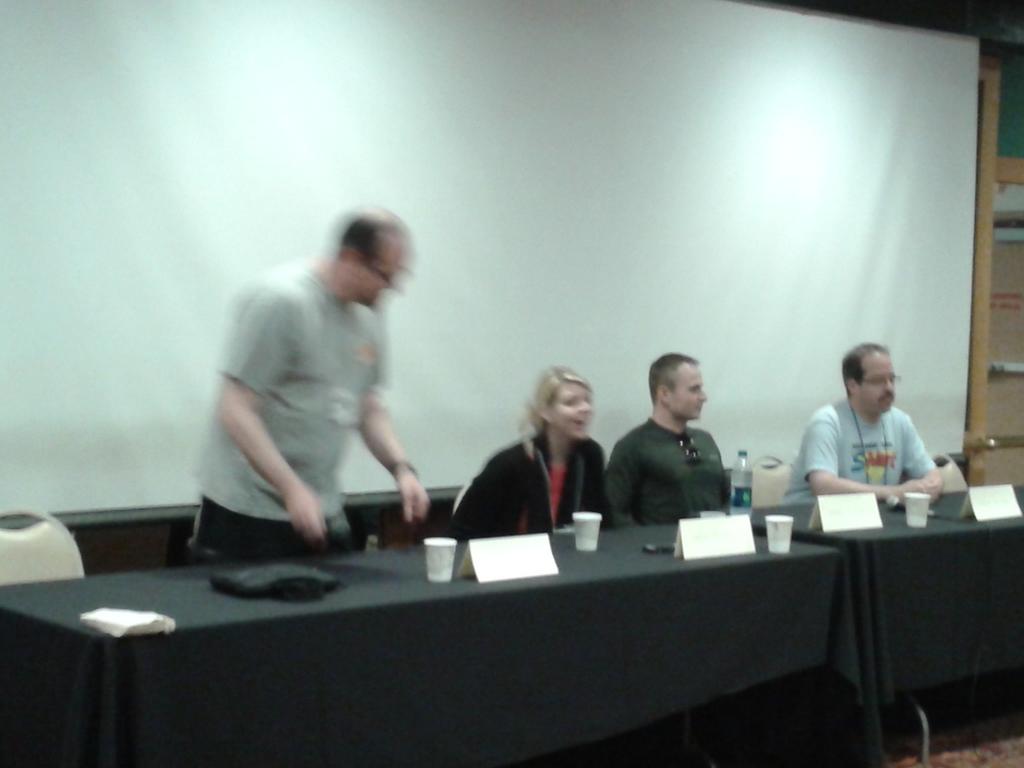
The Writer Guests of Honor interview with a blurry Jack Haringa, Amber Benson, Michael Koryta, and me.
The programming at Necon is always enjoyable, but the real draw is the people. When we describe Necon as a family reunion, we mean it. It’s one of the most welcoming, loving, non-judgmental atmospheres I’ve ever been in. I didn’t meet a single new “camper” this year who wasn’t enthusiastic about coming back again. This happened to be the first year since Necon founder Bob Booth passed away, and his family — Sara Calia, Dan Booth, and Mary Booth — did a fantastic job keeping it all flowing smoothly in his absence. His presence was missed, and yet he felt very much there.
Two events stand out the most for me from this year’s Necon. The first was an impromptu H.P. Lovecraft walking tour of Providence a few of us took on Saturday morning, including Brian Keene, Mary SanGiovanni, Jim Moore, and Bev Vincent. Charles Rutledge led the tour. Dan Foley “drove” — by which I mean he missed every turn and nearly took us to Maine. We saw the house where Lovecraft lived when he wrote “The Call of Cthulhu” and other seminal works, as well as the house that inspired his story “The Shunned House,” and the cemetery where both Lovecraft and Poe used to stroll while thinking about their stories. There was so much history there you could feel it.
The second standout event was, ahem, the roast on Saturday night. Chris Golden worked tirelessly to fool me into thinking we were roasting Jeff Strand, but it was all an elaborate ruse. I was the one being roasted! How my friends managed to keep this from me for weeks — especially Jack, whom I’d just seen the weekend before at Readercon — is beyond me, but they did a fantastic job keeping it on the low down. I was taken completely by surprise. I’m told the look on my face was priceless. If anyone has a photo of that moment, I’d love to see it!
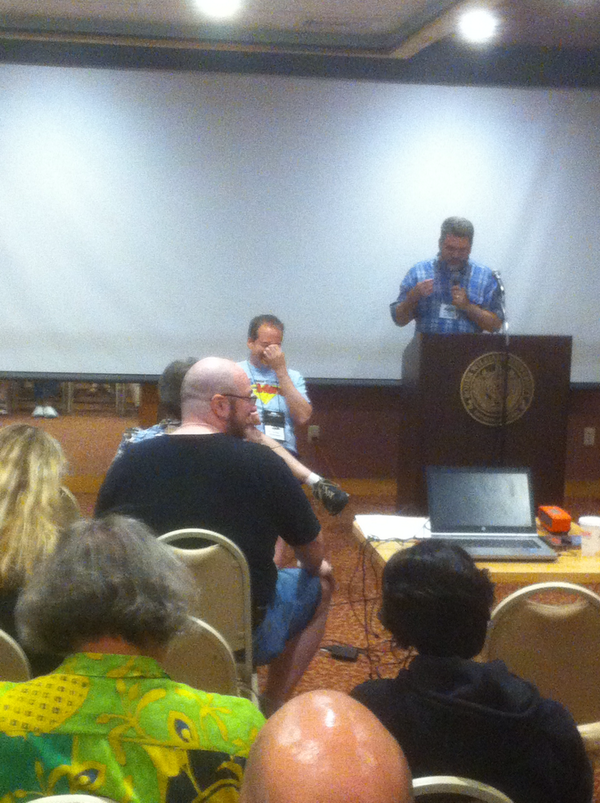
This picture pretty much sums it up.
I’m not supposed to repeat what was said at the roast, but suffice it to say they got me good. Especially Kasey Lansdale. Ouch! They even trotted out that old photo of me in the bikini top from the Hawaiian Shirt Contest back in 2002. Bastards. But just when I thought it was over, there was one last surprise…
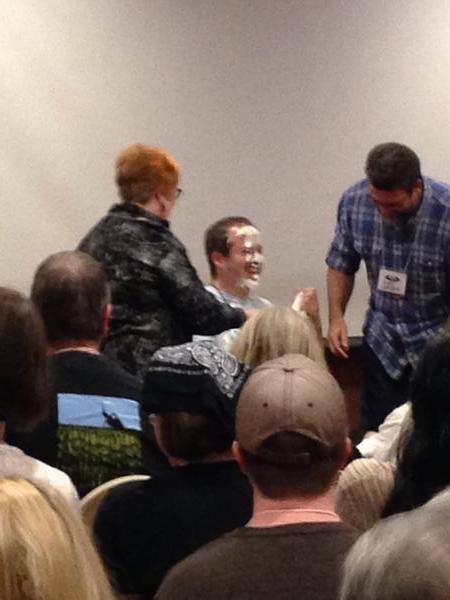
…a pie in the face from Ginjer Buchanan! I felt deeply loved and appreciated, despite the zingers and being unexpectedly covered in whipped cream with no clean pants to change into. I tried to give back as good as I got during my rebuttal, but it was already a long night and I didn’t hit everyone who had roasted me, just a select few. Then I went back to my room, changed out of my whipped cream-covered clothes, showered, and went out to join my friends in my pajamas.
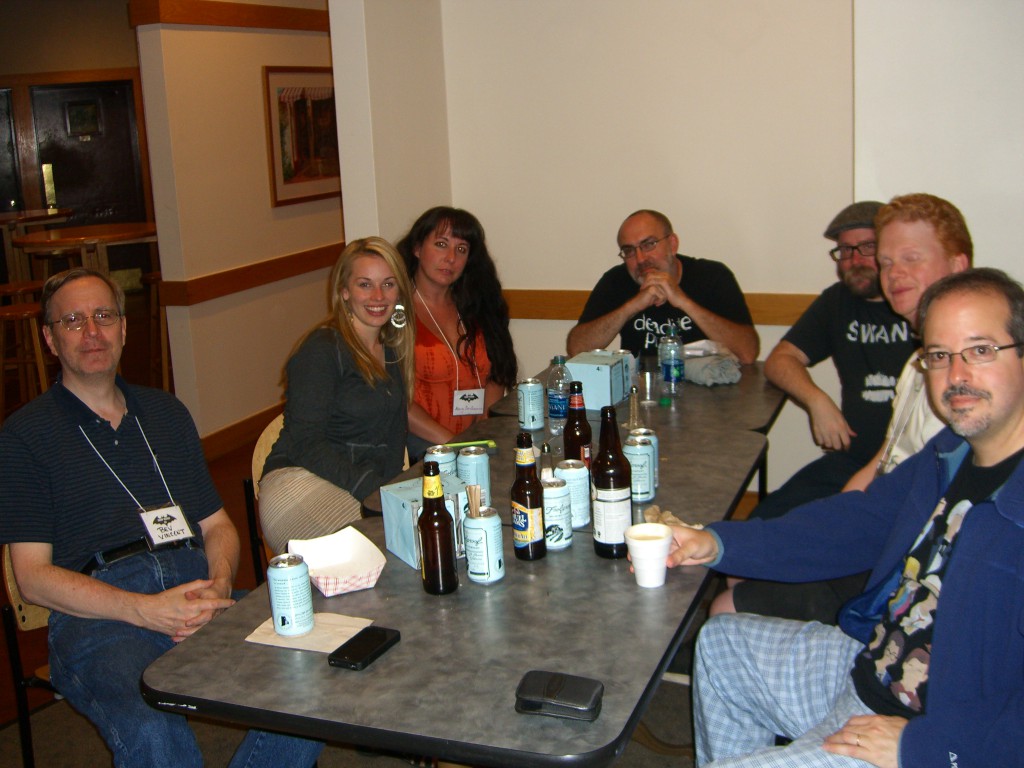
Post-roast with Bev Vincent, Kasey Lansdale, Mary SanGiovanni, Brian Keene, Shawn Bagley, John Goodrich, and the “man of the hour” in his pajamas.
Chris Golden retired that night from hosting the annual roast and left its future in the hands of Jeff Strand and myself. I know we’ll do him proud. And that’s another Necon in the rearview mirror. It’s always sad saying goodbye, but it was great seeing Amber again and making new friends with Kasey and Michael. I hope all of them will come back to Necon again. I know I will.
You can see more pictures from Necon 34 here.
Oh, and one last thing. Thank you, all of you, from the bottom of my heart…for your mediocrity.








